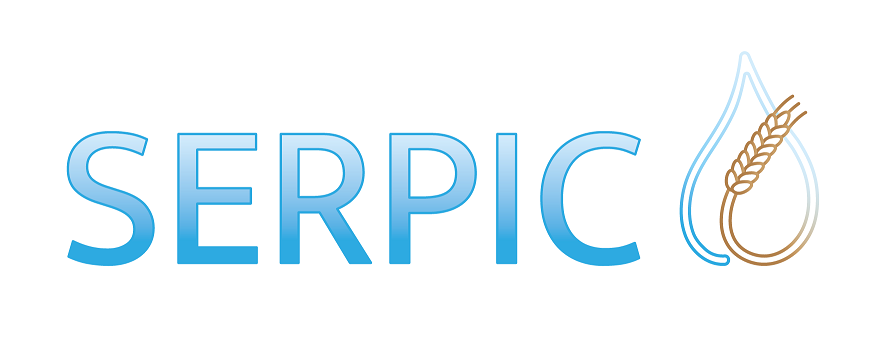Sustainable Electrochemical Reduction of contaminants of emerging concern and Pathogens in WWTP effluent for Irrigation of Crops
|
SERPIC will develop an integral technology, based on a multi-barrier approach, to treat the effluents of wastewater treatment plants (WWTPs) to maximise the reduction of contaminants of emerging concern (CECs).
A membrane nanofiltration (NF) technology will be applied to reduce CECs in its permeate stream by at least 90 % while retaining the nutrients. A residual disinfection using chlorine dioxide produced electrochemically will be added to the stream used for crops irrigation (Route A). The CECs in the polluted concentrate (retentate) stream will be reduced by at least 80 % by light driven electro-chemical oxidation. When discharged into the aquatic system (route B), it will contribute to the quality improvement of the surface water body.
|
A prototype treatment plant will be set-up and evaluated for irrigation in long-term tests with the help of agricultural test pots. A review investigation of CECs spread will be performed at four regional showcases in Europe and Africa. It will include a detailed assessment of the individual situation and surrounding condition. Transfer concepts will be developed to transfer the results of the treatment technology to other regions, especially in low- and middle-income countries.
Keywords
Irrigation, Reclamation, WWTP effluent, Electrochemical technologies, Renewable energy
Project Website
Achievements so far
The SERPIC project has made significant progress in addressing Contaminants of Emerging Concern (CECs) in wastewater treatment. Key achievements include the identification of six target CECs through rigorous analysis in showcase regions and the development of analytical methods for implementation at the field test site in Spain. Integral components of the SERPIC treatment technology, such as nanofiltration membranes and persulphate electrolyser cells, have been developed and verified at bench scale. Supply challenges have led to adjustments to the project schedule, but the consortium remains committed to ensuring the prototype is operational by July 2023. Looking ahead, SERPIC aims to use its results to develop and implement CEC mitigation technologies worldwide, thereby promoting economic growth and sustainability.
If you're interested in scientific publications associated with SERPIC, click here.
